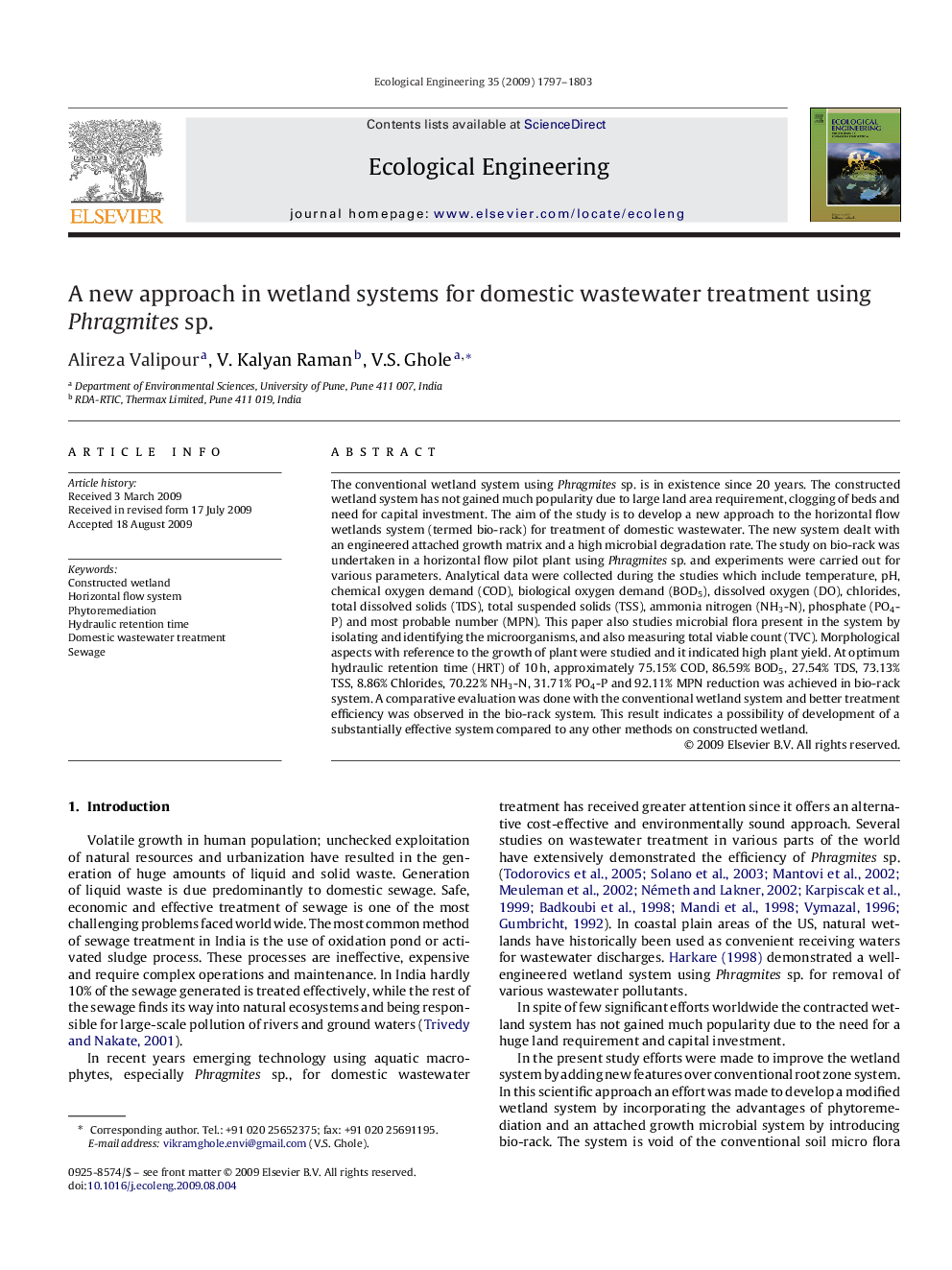| Article ID | Journal | Published Year | Pages | File Type |
|---|---|---|---|---|
| 4390419 | Ecological Engineering | 2009 | 7 Pages |
Abstract
The conventional wetland system using Phragmites sp. is in existence since 20 years. The constructed wetland system has not gained much popularity due to large land area requirement, clogging of beds and need for capital investment. The aim of the study is to develop a new approach to the horizontal flow wetlands system (termed bio-rack) for treatment of domestic wastewater. The new system dealt with an engineered attached growth matrix and a high microbial degradation rate. The study on bio-rack was undertaken in a horizontal flow pilot plant using Phragmites sp. and experiments were carried out for various parameters. Analytical data were collected during the studies which include temperature, pH, chemical oxygen demand (COD), biological oxygen demand (BOD5), dissolved oxygen (DO), chlorides, total dissolved solids (TDS), total suspended solids (TSS), ammonia nitrogen (NH3-N), phosphate (PO4-P) and most probable number (MPN). This paper also studies microbial flora present in the system by isolating and identifying the microorganisms, and also measuring total viable count (TVC). Morphological aspects with reference to the growth of plant were studied and it indicated high plant yield. At optimum hydraulic retention time (HRT) of 10Â h, approximately 75.15% COD, 86.59% BOD5, 27.54% TDS, 73.13% TSS, 8.86% Chlorides, 70.22% NH3-N, 31.71% PO4-P and 92.11% MPN reduction was achieved in bio-rack system. A comparative evaluation was done with the conventional wetland system and better treatment efficiency was observed in the bio-rack system. This result indicates a possibility of development of a substantially effective system compared to any other methods on constructed wetland.
Keywords
Related Topics
Life Sciences
Agricultural and Biological Sciences
Ecology, Evolution, Behavior and Systematics
Authors
Alireza Valipour, V. Kalyan Raman, V.S. Ghole,
